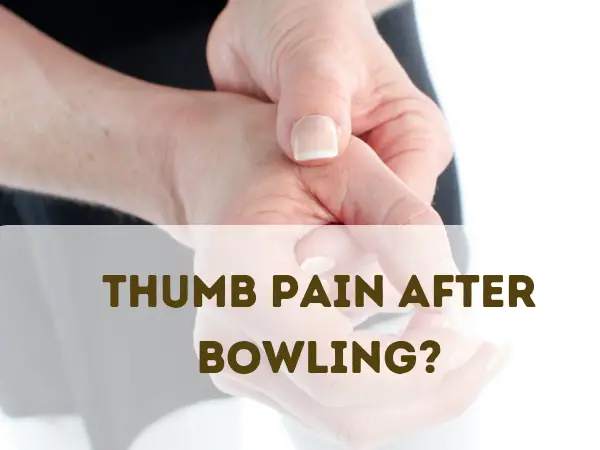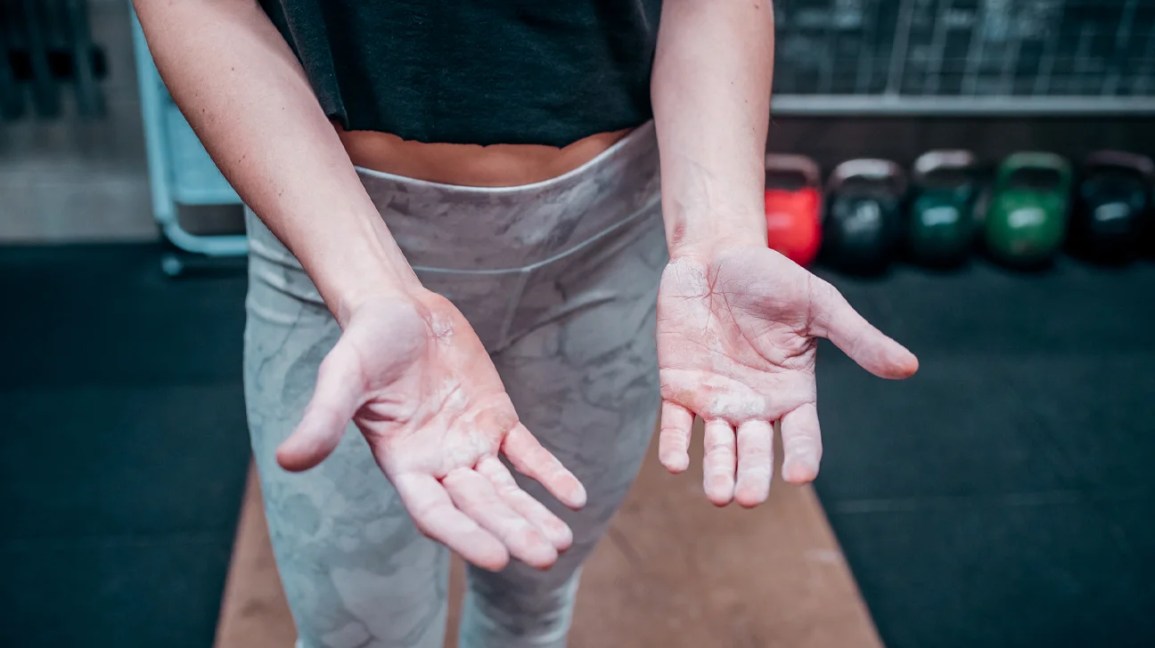
Bowling is super fun, but getting hurt while bowling is quite the opposite of that. Most bowlers can’t seem to understand why their thumb is hurting until it gets too late. As soon as you feel a little bit of soreness or difficulty in movements, take the necessary steps to reverse the damage. If you are reading this article with pain in your thumb, read on, my friends! I have got a lot to talk about.
Why does your thumb hurt after bowling?
Just like your fingers, lower back, shoulder, and legs, your thumb can get injured due to bowling. You might not feel the pain immediately. Rather, you will start to feel after stopping for the day or much later. It’s possible that your thumb is hurting or feeling sore after bowling because you have overused your thumb or you might have strained it while playing.
As we all know, bowling requires repetitive physical motions. Our bodies are made to function with repetitive shots but sometimes you gotta pay the price for that. Ask any gym-goers and they will say, they often get extreme pain or soreness after a long hard day in the gym. So when you bowl for a long time using the same motions again and again, that can cause small tears in the muscles and tendons in your thumb.
So what can be the worst-case scenario? If the pain doesn’t go away after temporary pain relief treatment, you are likely to develop a condition called “bowler’s thumb”. Bowler’s thumb is caused by repetitive impact on your thumb as you grip and release your bowling ball.
Another reason, your thumb is probably hurting is because you are getting the thumb out of the ball fast. When your thumb doesn’t get out of the thumb hole quickly enough, gravity starts to pull the ball down and some of the ball weights put pressure on the knuckle of your thumb, also known as the IP Joint. You are less likely to get a good shot if you can’t get the thumb out on time. Here is my another articles how to get your thumb out safely . Hope it helps you! The Instructors always guide juniors to take it out on time. Not only does it make your bowling experience better, but also risk and pain-free.
Don’t forget to get your bowling ball’s thumb hole checked. If the hole is too tight or too loose, that is another reason you are likely to hurt your bowling finger.
How do You stop my thumb from hurting when bowling?
The best way to protect your thumb from hurting is to take proper precautions. One of the best ways to do it is to apply a thin layer of new skin liquid bandage and then put a patch over the top of it. Then put another layer of new skin on the patch. Make sure it is nice and secure onto your thumb. Keep your Thumb’s IP joint flexed when you do this. After that, let the liquid dry and then put a thumb protective patch on top of the patch and new skin.
Know that, this technique is applicable if you already have an existing injury. If your thumb has no pain for now, just use the thumb protective patch on your dry skin. Make sure you can move your thumb easily after putting that on.
If the issue is with your wrong-sized bowling ball thumb hole, you can re-drill it. If the drilling position is alright and the hole is a bit loose for you, just use an insert that makes the drilled hole secured.
Always clean your thumb hole before you start bowling. Cleaning and smoothing out the thumb hole lowers the risk of injury and pain.
How do you fix a bowler’s thumb if happened?
To alleviate your thumb pain and prevent any further injuries, you should let your thumb rest. For that, avoid bowling or any other activities that involve your thumb and fingers and have a high chance of getting a strain. To heal the pain, you should consider icing the area. Cold temperature works like a charm to reduce soreness.
If the ice bag isn’t helping, you can take over-the-counter pain medication and consume it following the direction. What if none of these work for you? Well, if your pain gets severe and intolerable, consult with a doctor or a physical therapist immediately. They will help you with further evaluation and treatment.
What are the exercises for thumb injuries?
When bowlers hurt their thumbs due to bowling, most of the time the first knuckle takes the fall. If you have hurt your thumb, it’s time to rest and heal. At the same time, you should perform some basic thumb exercises to get things back to normal.
To perform thumb IP flexion—
– First, place your hand and forearm on a flat surface, preferably a table.
– Now, keep your affected thumb pointing upward.
– Next, you have to hold your injured thumb steady with your other hand. Make sure you are holding it just below the joint which is close to your thumbnail.
– Bend your thumb tip downward, and then straighten it.
– Repeat the process 8 to 12 times.
– Start slow and gradually increase the number of times you do it.
Conclusion
Once the deed is done, there’s nothing you can do. Just follow the instructions above to reduce your pain. For a faster recovery, get the necessary equipment you are gonna need. Also, don’t forget to perform the bowling thumb exercises. Your main focus should be healing it first, then you can go back to bowling and live the dream. So good luck with your healing journey. Catch you later, my friends!

Passionate Bowler and Bowling Enthusiast
Jess Pinelli is a dedicated bowling enthusiast with a deep love for the sport that spans over 6 years. With numerous strikes, spares, and a few gutter balls under hes belt, he has honed his skills on lanes across the country. Pinelli’s journey in the world of bowling has been a remarkable one, from casual weekend games with friends to competitive league play and even a few local tournaments.
Driven by her passion for the game, Pinelli decided to channel her expertise and knowledge into the digital realm, becoming a prolific author on this bowling website. She’s your go-to source for everything bowling-related, from mastering the perfect hook to choosing the right bowling ball and even navigating the world of bowling etiquette.
When she’s not busy writing informative articles or reviewing the latest bowling gear, you’ll likely find Pinellis at her favorite local bowling alley, helping newcomers improve their game or enjoying some friendly competition with fellow bowlers. She firmly believes that bowling is not just a game but a community, and she’s committed to fostering that sense of camaraderie both online and offline.



